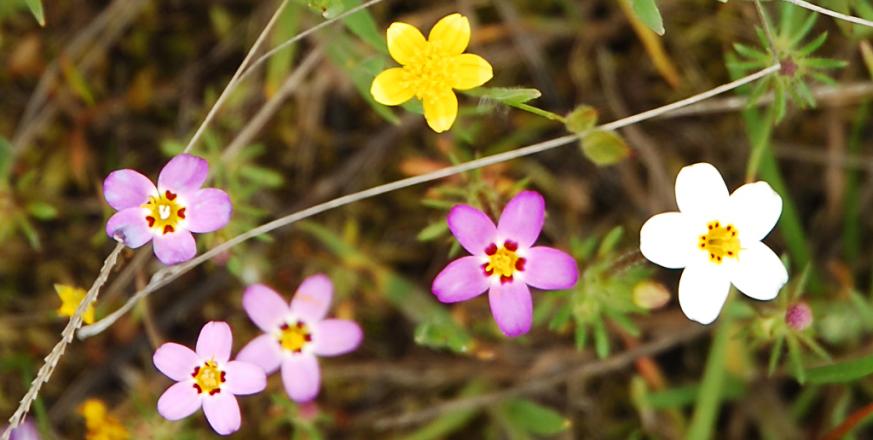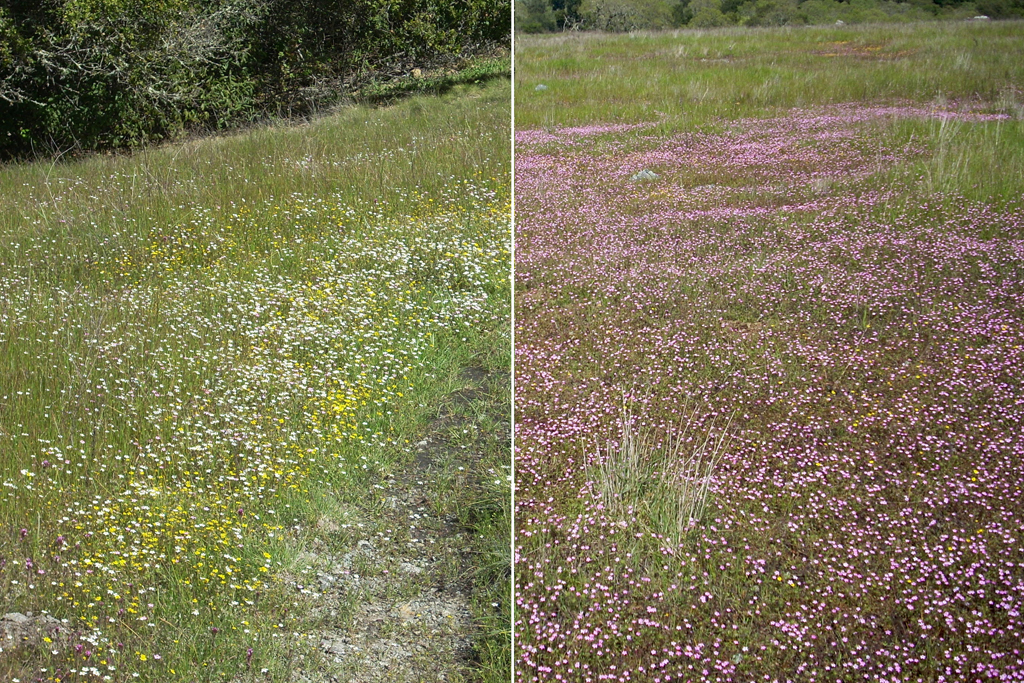Genetic basis of serpentine adaptation in Leptosiphon parviflorus

Summary
Serpentine soils, characterized by low calcium to magnesium ratios and poor water holding capacity, are prevalent in California. These specialized habitats play an important role in the promotion of biodiversity and harbor many serpentine endemics. Therefore they are interesting habitats for which to study the process of adaptation.
Leptosiphon parviflorus (variable linanthus) at Jasper Ridge provides a unique system to examine the genetic basis of serpentine tolerance. Populations of L. parviflorus grow both on and off serpentine soils at Jasper Ridge and in some cases these populations exist side by side with ample gene flow occurring between (Kay et al. 2011). Despite this close proximity, our lab has found evidence for local adaptation to these soil types. It also appears that a flower color polymorphism with a genetic basis is associated with soil type and may play a role in serpentine tolerance.
This system will be used to investigate the number and effect sizes of genes involved in serpentine adaptation and to study trade-offs at the genetic level by determining if genes that result in fitness increases in one habitat also cause fitness decreases in the other habitat.
Representative plants from both soil types will be sequenced to search for outlier loci that show a high degree of differentiation between habitats. Since gene flow is occurring between populations, any fixed genetic differences associated with soil type are inferred to have a role in adaptation to that environment. Sequence data will also be used to create markers to construct a linkage map and to produce Near Isogenic Lines (NILs) for genomic regions associated with serpentine tolerance. These NILs will be grown on both soil types to test the fitness effects of these adaptive genomic regions.
This study will provide insight into the number and effect sizes of genetic changes occurring along an adaptive trajectory.
Project Location (Sectors 23, 24)
 |  |  |  |  |  |  |  |  |
 |  |  |  |  |  |  |  |  |
 |  |  |  |  |  |  |  |  |
 |  |  |  |  |  |  |  |  |
 |  |  |  |  |  |  |  |  |
 |  |  |  |  |  |  |  |  |
Useful Links
Visible from Trail/Road
15 - Serpentine
F - Grassland Fire Road




